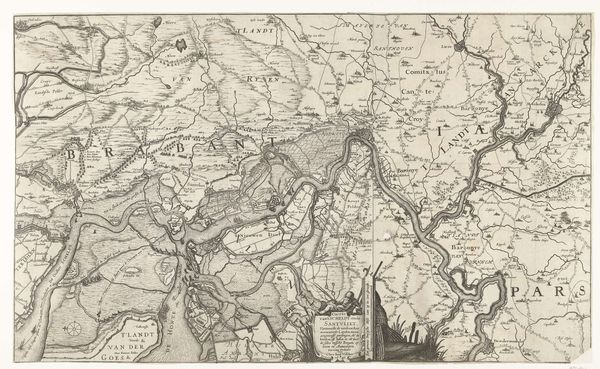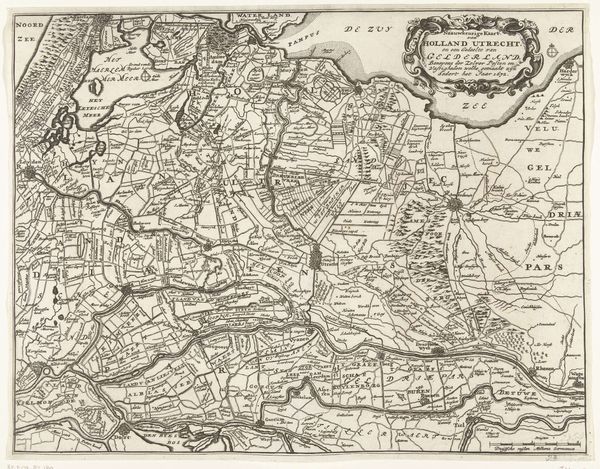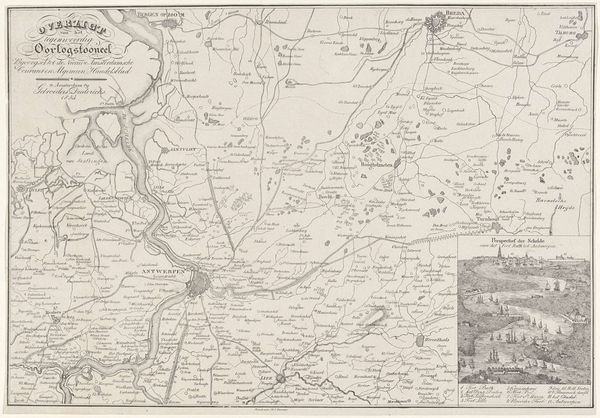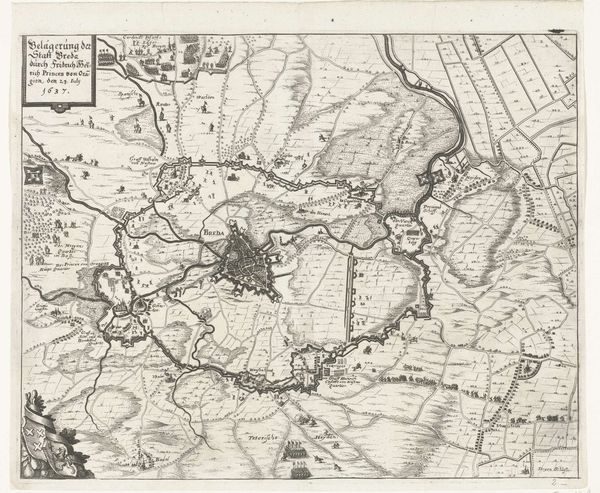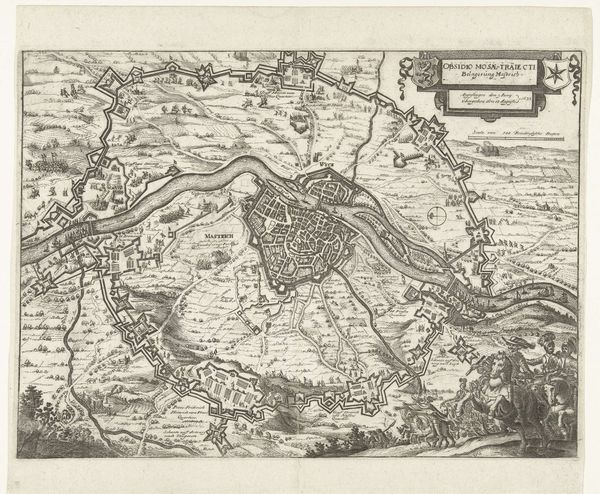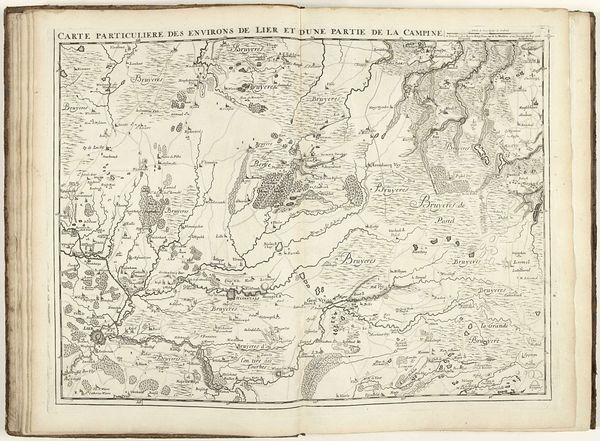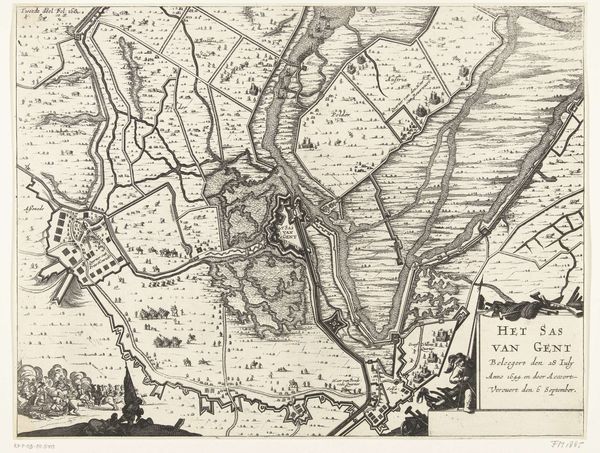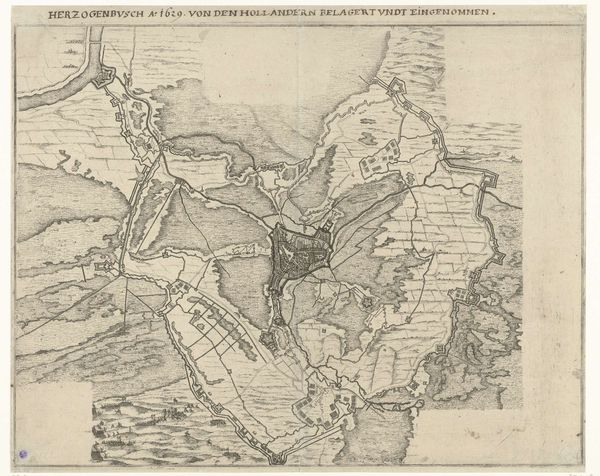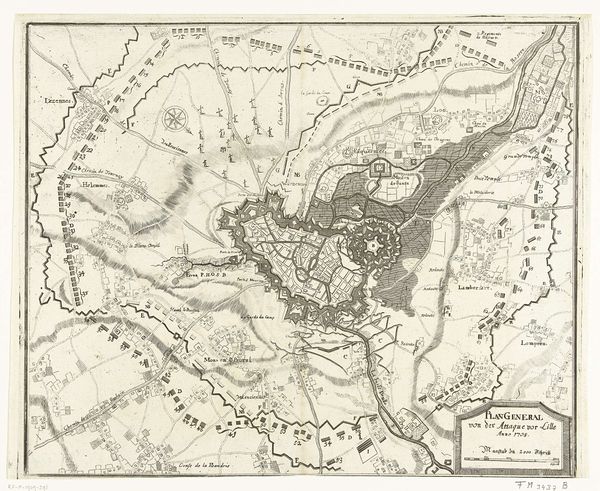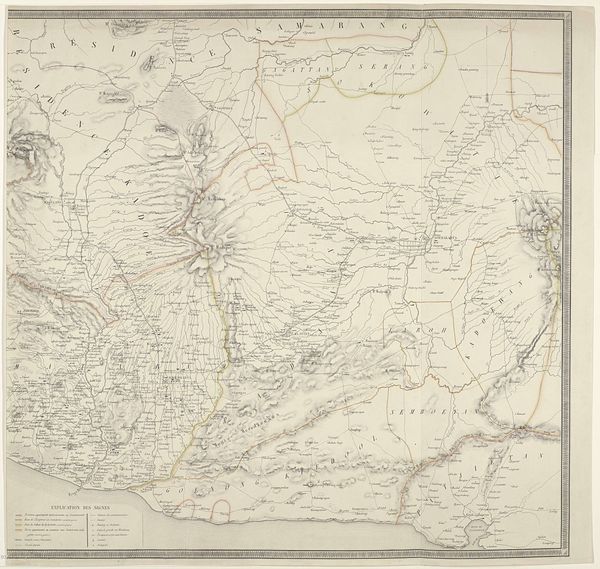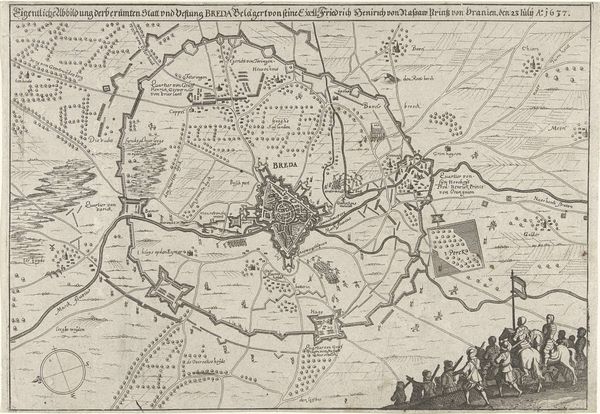
drawing, print, ink, pen, engraving
#
drawing
#
pen drawing
# print
#
pen illustration
#
pen sketch
#
landscape
#
ink
#
geometric
#
line
#
pen
#
cityscape
#
engraving
Dimensions: height 466 mm, width 583 mm
Copyright: Rijks Museum: Open Domain
Jacobus Harrewijn created this detailed map of the siege of Lille in 1708 using etching. Notice how the dense network of lines creates a complex, almost hypnotic visual texture. This isn't just a straightforward representation; the artist uses line and form to convey strategic information and a sense of dramatic tension. Look closely at how Harrewijn employs different densities of lines to distinguish between land, fortifications, and water. The varying line weights and cross-hatching techniques give depth to the terrain. This suggests a meticulous process of observation, transformed into a codified visual language. The map operates as a semiotic system, where each mark is a signifier loaded with specific meaning. The structural organization of space here isn't merely descriptive, but actively constructs a narrative of power, control, and military strategy. The precision and intricacy of the etched lines invite us to consider how the physical act of mark-making can transform objective data into a subjective interpretation of space and conflict. The map is not just a document but a cultural artifact that reflects contemporary attitudes towards war, territory, and knowledge itself.
Comments
No comments
Be the first to comment and join the conversation on the ultimate creative platform.
